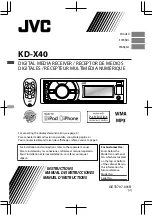
Configuring the WMIC for the First Time
Protecting Your Wireless LAN
4
Cisco 3200 Series Wireless MIC Software Configuration Guide
Protecting Your Wireless LAN
After you assign basic settings to your WMIC, you need to configure security settings to prevent
unauthorized access to your network. Because it is a radio device, the WMIC can communicate beyond
the physical boundaries of a building. Advanced security features are described in the following
chapters:
•
A unique SSID that is not broadcast in the beacon (see
“Service Set Identifiers”
for additional
information)
•
Wired Equivalent Privacy (WEP) and WEP features (see
“Cipher Suites and WEP”
)
•
Dynamic WEP and WMIC authentication (see
“Authentication Types”
)
Configuring Basic Security Settings
After you assign basic settings to your access point, you must configure security settings to prevent
unauthorized access to your network. Because it is a radio device, the access point can communicate
beyond the physical boundaries of your worksite.
Using VLANs
If you use VLANs on your wireless LAN and assign SSIDs to VLANs, you can create multiple SSIDs.
However, if you do not use VLANs on your wireless LAN, the security options that you can assign to
SSIDs are limited because encryption settings and authentication types are linked. Without VLANs,
encryption settings (WEP and ciphers) apply to an interface, such as the 2.4-GHz radio, and you cannot
use more than one encryption setting on an interface. For example, when you create an SSID with static
WEP with VLANs disabled, you cannot create additional SSIDs with WPA authentication because they
use different encryption settings. If you find that the security setting for an SSID conflicts with another
SSID, you can delete one or more SSIDs to eliminate the conflict.
















































